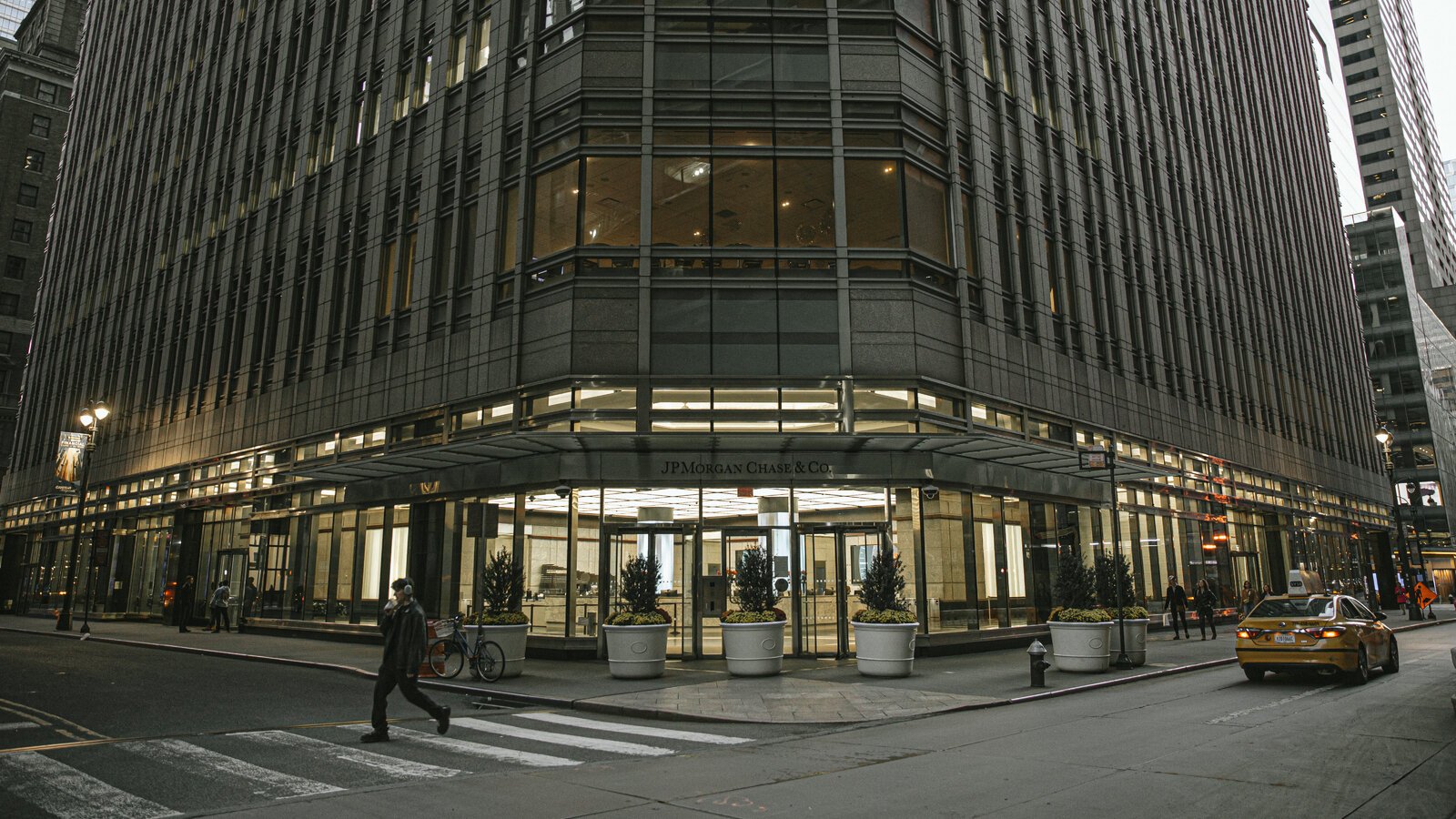Finance & Investment
Emerging Markets to Watch in 2025: Opportunities and Risks

Introduction to Emerging Markets
Emerging markets refer to nations that are in the process of rapid growth and industrialization, characterized by their transition from developing to developed status. These markets typically exhibit higher economic growth rates compared to advanced economies, making them attractive for investors seeking opportunities. Emerging markets often display significant potential due to their vast resources, young populations, and increasing integration into the global economy. However, they also present distinct challenges and risks, including political instability, currency fluctuations, and fluctuating regulatory environments.
The classification of a country as an emerging market relies on various criteria, including economic indicators, market accessibility, and socioeconomic factors. Organizations such as the International Monetary Fund (IMF) and the World Bank utilize these criteria to assess whether a country is experiencing rapid economic development, which includes steady GDP growth, increasing foreign direct investment, and improving infrastructure. Moreover, factors such as market liquidity, consumer demand, and technological advances further enhance the status of these nations as emerging players in the global landscape.
In the context of the global economy, emerging markets hold significant weight as they contribute to a sizable portion of the world’s economic growth. As developed nations face stagnant growth, emerging economies are expected to drive global expansion, thus presenting an array of investment opportunities across various sectors. These regions are becoming increasingly attractive due to their potential for high returns on investment, diversified portfolios, and dynamically evolving markets. As we explore specific emerging markets poised for growth in 2025, it is essential to recognize their unique characteristics and the potential risks associated with investing in these dynamic environments.
Key Emerging Markets to Watch
As we approach 2025, several emerging markets are poised to capture the attention of investors and global economic analysts alike. Among these, India stands out with its rapidly expanding economy. With a young population and increasing urbanization, India is expected to witness significant growth in various sectors such as technology, manufacturing, and renewable energy. The government’s focus on initiatives like “Make in India” is anticipated to enhance the investment climate, further stimulating economic development and job creation.
Following closely is Vietnam, a nation experiencing robust economic performance characterized by a thriving manufacturing sector. The country’s strategic location and participation in multiple trade agreements have bolstered its appeal as a manufacturing hub. As global companies look to diversify supply chains, Vietnam’s exports, particularly in electronics and textiles, have shown remarkable growth. Continued investment in infrastructure and a commitment to skill development among the workforce are likely to contribute to Vietnam’s sustained economic momentum.
Brazil also merits attention as it emerges from economic stagnation, with opportunities lying within sectors such as agribusiness, renewable energy, and technology. The agricultural sector, particularly soy and coffee production, positions Brazil as a key player on the global stage. Additionally, the government initiatives aimed at improving the business environment and attracting foreign investment signal a positive shift that could spur growth in the coming years. Despite facing challenges related to political stability and inflation, Brazil’s vast natural resources and market potential cannot be overlooked.
In conclusion, the emerging markets of India, Vietnam, and Brazil are projected to experience substantial growth by 2025. Each country has unique strengths and opportunities that present both potential benefits and risks for investors seeking to capitalize on global economic shifts.
Trends Influencing Emerging Markets
As we approach 2025, several significant trends are shaping the landscape of emerging markets, creating both opportunities and challenges for investors. One of the primary trends is the rapid pace of technological advancements. The proliferation of digital technology, including mobile connectivity and e-commerce, is transforming how businesses operate and consumers interact. This digital revolution is particularly prominent in countries such as India and Brazil, where a substantial segment of the population is gaining access to the internet for the first time. Investment in technology infrastructure can lead to increased productivity and economic growth, attracting further interest from global investors.
Demographic changes also play a crucial role in influencing emerging markets. An expanding youth population in various regions, particularly in Africa and Asia, is expected to drive economic growth and consumption patterns over the coming years. This demographic shift presents opportunities for businesses to cater to a young and increasingly urban consumer base. However, it also poses challenges, including the need for adequate job creation and educational initiatives to harness this potential effectively.
Urbanization is another notable trend impacting emerging markets. Cities are growing at an unprecedented rate, leading to increased infrastructure demands and the need for sustainable urban development. Investing in smart cities, renewable energy, and public services can provide significant returns while addressing environmental and social challenges. However, rapid urbanization can also exacerbate issues such as poverty and inequality if not managed properly.
Finally, global trade dynamics continue to evolve, affecting emerging markets significantly. Trade policies, geopolitical tensions, and shifts in supply chains, particularly in the wake of the COVID-19 pandemic, have created new opportunities and risks. Investors must navigate these complexities as they make decisions within the emerging markets landscape.
Investment Opportunities in Emerging Markets
The landscape of emerging markets is rapidly evolving, offering numerous investment opportunities across various sectors. By 2025, sectors such as technology, renewable energy, and healthcare are positioned to showcase substantial growth potential for investors. These areas not only indicate innovation but also demonstrate the capacity for long-term returns, mitigating risks associated with emerging economies.
Technology remains at the forefront of investment attractiveness in emerging markets. Countries with advancing digital infrastructures are seeing remarkable growth in sectors such as fintech, e-commerce, and artificial intelligence. For instance, nations in Southeast Asia and Africa are experiencing a surge in mobile payment solutions and online retail, driven by an increasing digital literacy within their populations. These developments create significant opportunities for businesses and investors who are looking to capitalize on the digital transformation that these regions are undergoing.
Another promising sector is renewable energy. As the world shifts towards sustainable practices, many emerging markets are investing heavily in solar, wind, and hydroelectric energy sources. Countries such as India and Brazil are leading initiatives to reduce carbon emissions and diversify their energy portfolios, providing lucrative investment opportunities in infrastructure and technology tailored towards renewable energy solutions. The growing global emphasis on climate change and sustainability directly contributes to the robust growth expected in this area.
Furthermore, healthcare is poised for expansion as emerging markets face increasing demand for better medical services and products. With rising middle-class populations and aging demographics, investments in pharmaceuticals, telemedicine, and health technology are predicted to flourish. Governments and private sectors are collaborating to improve healthcare accessibility, which opens doors for significant returns on investment.
In summary, emerging markets are showcasing compelling investment opportunities in technology, renewable energy, and healthcare. Investors keen on tapping into these sectors should consider the distinctive advantages and growth trajectories that these regions offer, leading to potentially lucrative outcomes by 2025.
Risks Associated with Emerging Markets
The landscape of emerging markets presents a unique set of challenges and opportunities for investors. One of the most significant risks associated with these markets is political instability. Governments in emerging economies can be volatile, with changes in leadership often leading to unexpected shifts in policies and regulations. Such instability can result in fluctuations in market conditions, affecting the overall investment climate. Investors must closely monitor political developments and assess their potential impacts on market stability.
Another critical risk is the pronounced currency fluctuations prevalent in emerging markets. Currency values can be highly unstable, influenced by various factors such as inflation, interest rates, and geopolitical events. This volatility can lead to substantial losses for foreign investors if not strategically managed. Investors should consider hedging strategies to mitigate potential adverse effects resulting from sudden currency devaluation or appreciation.
Regulatory challenges also pose significant risks for investors in emerging markets. These can range from inconsistent enforcement of laws to rapid changes in investment regulations. In some cases, local governments may impose restrictions that affect foreign ownership or repatriation of profits. Understanding the regulatory landscape is essential when entering a new market, emphasizing the importance of rigorous due diligence to navigate these complexities effectively.
Conducting extensive research and risk assessment is vital before investing in emerging markets. Investors should not only examine the macroeconomic conditions but also consider specific factors unique to each market. Understanding the political climate, currency stability, and regulatory environment is crucial for making informed investment decisions. By recognizing and preparing for these risks, investors can better position themselves to capitalize on the potential opportunities that emerging markets offer.
Case Studies of Successful Emerging Market Investments
Emerging markets have consistently offered numerous opportunities for investors, showcasing the potential for significant returns when approached with a strategic mindset. This section highlights several successful investment case studies that demonstrate how companies and investors effectively navigated these dynamic landscapes.
One prominent example is the telecommunications sector in Myanmar. Following the government’s decision to liberalize its telecommunications market in 2013, foreign investors began to flock to the country, eager to capitalize on its untapped potential. A notable player, Telenor Group, seized the opportunity by entering the market and quickly expanding its mobile network. Within a few years, Telenor became one of the country’s leading providers, capturing a substantial market share. Their success stemmed from a tailored approach that involved investing in local partnerships and focusing on affordable service offerings, which resonated well with the price-sensitive population.
Another remarkable case is that of the renewable energy sector in India. As the country aimed to meet its growing energy demand while addressing environmental concerns, international investors saw the potential for substantial returns. One distinctive investment involved a joint venture between foreign companies and local firms to develop solar parks in the country. This collaboration led to the establishment of one of the world’s largest solar parks in Gujarat, yielding considerable financial gains and positioning investors favorably within the burgeoning green energy market.
Lastly, the e-commerce boom in Southeast Asia offers a compelling case of successful investment in emerging markets. As Internet penetration increased, platforms like Tokopedia and Lazada attracted significant venture capital funding. These companies focused on bridging the gap between traditional retail and digital commerce, demonstrating adaptability and a keen understanding of the local consumer behavior. Investors who aligned with these platforms not only benefited from rapid growth but also contributed to the region’s digital transformation.
These case studies illustrate that success in emerging markets is often a product of understanding local dynamics, fostering partnerships, and being responsive to consumer needs, ultimately leading to strong financial outcomes for investors.
Future Outlook for Emerging Markets by 2025
As we look ahead to 2025, emerging markets are poised to play a significant role in the global economy. Analysts predict a range of opportunities and challenges in these markets, influenced by economic growth, technological advancements, and shifting geopolitical landscapes. According to various economic forecasts, countries such as India, Brazil, and Vietnam are expected to experience substantial economic expansion, fueled by their young populations, increasing middle-class income, and proactive governmental policies aimed at attracting foreign investment.
The International Monetary Fund (IMF) has projected that GDP growth in emerging markets will outpace that of developed economies, highlighting the potential for robust investment returns. Sectors such as technology, renewable energy, and consumer goods are anticipated to thrive, particularly in Asia and Latin America. Moreover, the digital transformation in these regions is expected to enhance productivity, creating a conducive environment for businesses to flourish. For foreign investors, this presents an opening to capitalize on emerging trends and leverage innovative solutions.
However, it’s essential to approach the opportunities in emerging markets with a degree of caution. Political instability, regulatory changes, and currency fluctuations can pose risks that might deter potential investors. Geopolitical tensions, especially in regions like Eastern Europe and the Middle East, continue to be significant factors that could disrupt market conditions. Furthermore, the ongoing impacts of climate change and the urgency to transition toward sustainable practices may affect industries heavily reliant on traditional resources.
In summary, while the prospects for emerging markets by 2025 are promising, stakeholders must remain vigilant and informed. It is crucial for investors to continually assess both the opportunities and the inherent risks associated with these dynamic economies to optimize their investment strategies effectively.
Strategies for Investing in Emerging Markets
Investing in emerging markets can present a myriad of opportunities as well as challenges. For investors looking to navigate this landscape effectively, several strategies can be employed to enhance investment outcomes while managing risks. One foundational strategy is portfolio diversification. By spreading investments across various sectors and geographical regions within emerging markets, investors can mitigate the impact of localized economic downturns. This approach not only reduces risk but also capitalizes on growth potential across different economies.
Establishing local partnerships is another effective strategy for investing in these markets. Collaborating with local firms can provide invaluable insights into the market dynamics, cultural nuances, and regulatory environments that may not be apparent to foreign investors. Local partners can aid in identifying lucrative investment opportunities that align with regional trends and consumer preferences, potentially yielding higher returns. These relationships can also facilitate smoother entry and operational processes, leveraging local expertise to navigate bureaucratic challenges.
Risk management techniques tailored for emerging markets are crucial in safeguarding investments. This could involve closely monitoring macroeconomic indicators, political stability, and currency fluctuations, all of which can have significant impacts on investments. Utilizing financial instruments such as options or futures can also help hedge against unforeseen market volatilities. Investors should remain vigilant and continuously assess their risk exposure, recalibrating strategies as needed to adapt to changing market conditions.
Lastly, keeping abreast of technological advancements and market trends in emerging economies will further empower investors. Many of these regions are undergoing rapid transformations in sectors such as technology and sustainability, which can present unique investment opportunities. By staying informed and employing these strategies, investors can navigate the complexities of emerging markets while positioning themselves for potential high returns.
Conclusion: Balancing Opportunities and Risks
As we look toward 2025, the potential of emerging markets presents a compelling landscape for investors. These markets, characterized by rapid growth and increasing consumer bases, offer a multitude of opportunities across various sectors, including technology, finance, and infrastructure. However, alongside these opportunities lie inherent risks that must be carefully considered. Political instability, economic volatility, and regulatory challenges are just a few factors that can impact the profitability of investments in these regions.
Throughout this discussion, we have explored key emerging markets that show promise for substantial returns in the coming years. Regions such as Southeast Asia, Africa, and Latin America are experiencing significant economic transitions that could lead to unprecedented growth. However, it is crucial to maintain a balanced perspective, recognizing that while high rewards can be enticing, the risk factors associated cannot be ignored. For instance, currency fluctuations and varying local regulations can influence market stability and investor confidence.
Investors should prioritize thorough research and strategic planning when navigating these dynamic environments. Staying informed about market trends, local economies, and geopolitical developments can equip investors with the insights needed to make sound decisions. Engaging with market analysts and financial advisors who specialize in emerging economies can also provide valuable guidance, helping to mitigate risks while capitalizing on growth potential.
In summary, the journey into emerging markets in 2025 is filled with both opportunities and risks. A judicious approach, marked by informed decision-making and ongoing education, will serve investors well as they endeavor to optimize their portfolios in these vibrant markets. It is essential to embrace a mindset of diligence and prudence, ensuring that the pursuit of potential rewards is balanced with the necessary caution regarding risks.

Finance & Investment
Trade Surveillance in Banking: Lessons from JPMorgan’s $348 Million Fine

Trade surveillance is a critical compliance function in banking and financial services that ensures the integrity of market activities and adherence to regulatory requirements. Effective trade monitoring helps prevent market abuses such as insider trading, front-running, and manipulation, protecting both investors and the broader financial system. Recently, JPMorgan Chase faced a substantial $348 million fine imposed by the Federal Reserve and the Office of the Comptroller of the Currency (OCC) due to inadequate trade surveillance controls. This high-profile penalty serves as a stark reminder to banks worldwide about the vital need for robust monitoring systems. Trade surveillance involves collecting and analyzing massive volumes of trading data in real time to identify suspicious behaviors or patterns that may indicate misconduct. As markets become more complex and trading volumes grow exponentially, financial institutions must invest heavily in surveillance technologies and governance frameworks to meet evolving regulatory expectations and safeguard their reputations.
The JPMorgan Case: What Went Wrong?
JPMorgan Chase’s penalty arose from several shortcomings in its trade surveillance program. Regulators found that the bank’s monitoring systems failed to adequately cover all trading venues and did not effectively analyze the full range of data needed to detect potential misconduct. Gaps in oversight allowed certain trading activities to go unchecked, increasing the risk of market abuses. Additionally, the bank’s controls were insufficient in preventing or identifying misconduct promptly, which is crucial for timely investigation and remediation. These deficiencies pointed to weaknesses in both technology infrastructure and internal governance. The case highlighted the consequences of inadequate surveillance, not only in terms of financial penalties but also reputational damage and potential loss of client trust. For financial institutions, the lesson is clear: trade surveillance cannot be an afterthought but must be a comprehensive, continuously updated program integral to daily operations.
Best Practices for Effective Trade Surveillance Systems
To avoid costly penalties and operational risks, banks need to implement trade surveillance systems that are robust, scalable, and adaptive. Best practices include integrating advanced analytics capable of processing large data sets across multiple trading platforms in real time. Machine learning and artificial intelligence technologies are increasingly being used to improve anomaly detection, reduce false positives, and provide compliance teams with actionable insights. Comprehensive surveillance programs also require strong governance frameworks that ensure clear roles, responsibilities, and accountability within the institution. Regular audits and continuous improvement cycles help identify gaps and adapt to new market practices or regulatory changes. Employee training and cultivating a compliance-oriented culture are equally important to ensure that staff understand surveillance requirements and actively support adherence. Transparency in reporting and effective communication with regulators can further enhance a bank’s ability to manage compliance risks proactively.
Technology’s Role in Enhancing Trade Surveillance
The complexity of modern financial markets demands that trade surveillance leverages cutting-edge technology solutions. Automated systems can monitor millions of trades, cross-referencing data from various sources such as order books, messaging systems, and market data feeds. AI-powered algorithms identify suspicious patterns that human monitors might miss and prioritize alerts for compliance teams to investigate. These technologies not only improve detection speed but also help reduce the burden of manual reviews, allowing staff to focus on high-risk cases. Additionally, cloud computing and big data architectures enable scalable storage and processing power essential for handling the volume and velocity of trade data. Implementing these technological advancements positions banks to meet stringent regulatory standards while maintaining operational efficiency and competitive advantage.
Strategic Takeaways for Banks and Financial Institutions
The JPMorgan fine underscores that trade surveillance is a critical area where banks cannot afford complacency. Financial institutions must treat compliance as a strategic priority, allocating sufficient resources to technology, people, and processes. Proactive investment in surveillance infrastructure not only reduces the risk of regulatory penalties but also enhances trust among clients and investors. Moreover, comprehensive trade monitoring helps detect internal control weaknesses and potential operational risks early, preventing larger issues. Institutions should conduct regular risk assessments to identify vulnerabilities and tailor surveillance parameters accordingly. Collaboration with regulators and industry groups can provide insights into emerging threats and best practices. Ultimately, integrating trade surveillance into the core of banking operations fosters a culture of integrity and resilience that benefits the institution and the financial markets as a whole.
Conclusion: Compliance as a Competitive Advantage
In conclusion, the JPMorgan Chase $348 million fine serves as a powerful cautionary tale for the banking sector, emphasizing the critical importance of effective trade surveillance. As financial markets evolve and regulatory scrutiny intensifies, banks must invest in sophisticated monitoring systems supported by advanced analytics and a strong compliance culture. Trade surveillance is not merely a regulatory obligation but a strategic tool that protects market integrity, strengthens client relationships, and mitigates operational risks. By learning from high-profile cases like JPMorgan’s, financial institutions can enhance their surveillance capabilities, avoid costly fines, and maintain their competitive edge in a complex and rapidly changing industry landscape. For banks committed to excellence, compliance and innovation must go hand in hand to build sustainable, trustworthy financial services for the future.
Economics
Asia’s Private Credit Boom: What It Means for Retail Investors

The Asia Pacific region is witnessing an extraordinary surge in private credit, transforming the financial landscape significantly. Private credit refers to direct lending to companies outside public markets, and over the last decade, this sector’s assets under management have grown from around $500 million to nearly $2 trillion. This rapid expansion is largely driven by emerging markets such as India and Australia, where businesses increasingly seek alternative financing solutions beyond traditional bank loans and public debt offerings. Historically, private credit has been dominated by institutional investors including pension funds and private equity firms. However, the landscape is evolving as retail investors gain access to this asset class through changing regulations, fintech platforms, and increased market demand. The expanding private credit market now offers retail investors an opportunity to diversify their portfolios and participate in an asset class that has demonstrated strong returns and resilience.
Why Private Credit Appeals to Retail Investors
Private credit has grown in popularity due to its potential to offer higher returns compared to traditional fixed-income investments such as government bonds or corporate debt. This is because private credit involves lending to companies with less liquidity and higher credit risk, factors that typically command a premium in yields. Retail investors often face challenges like low interest rates on savings and volatile stock markets, making private credit an attractive alternative for income generation and diversification. The growing involvement of financial giants such as JPMorgan Chase, which has recently allocated over $50 billion into the Asia Pacific private credit market, highlights the confidence that institutional investors have in the asset class. This institutional interest helps validate the opportunity for retail investors to explore private credit as part of a balanced investment strategy that supports both income goals and risk mitigation.
Regional Drivers Behind Asia’s Private Credit Boom
Asia’s private credit growth is closely tied to specific market conditions and regulatory environments within the region. In India, the tightening of banking regulations and a rise in non-performing assets have created a financing gap that private credit funds are actively filling. This has allowed companies to access capital through more flexible and tailored lending arrangements. Meanwhile, Australia’s advanced financial system and regulatory framework support a vibrant ecosystem of private credit funds and alternative lending platforms. These developments offer retail investors in these markets a variety of ways to participate in private credit. Investors can access this asset class through private debt mutual funds, alternative asset management platforms, and regulated digital lending marketplaces. Nevertheless, understanding the regulatory landscape and investment vehicle structures is critical to ensuring compliance and aligning investments with personal risk tolerance.
Key Risks and Considerations for Retail Investors
While private credit offers appealing opportunities, it is important for retail investors to be aware of its unique risks and challenges. Unlike publicly traded securities, private credit investments often involve longer lock-in periods during which liquidity is limited. This means investors may not be able to access their funds quickly, which could be a disadvantage for those requiring flexible cash flow. Additionally, private credit carries credit risk, meaning the possibility of borrower default can impact returns. Transparency is typically lower in private credit compared to public markets, so investors should diligently assess the quality and track record of the fund managers or platforms offering these investments. Understanding the underlying borrower profiles and loan terms is essential to mitigate potential losses. Fees can also be higher due to the complexity involved in underwriting and managing private loans. For these reasons, retail investors should perform comprehensive due diligence, seek professional advice, and only allocate a suitable portion of their portfolios to private credit.
The Role of Education and Professional Guidance
Given the complexities of private credit investing, education and expert advice are indispensable for retail investors. Keeping abreast of regulatory changes, market trends, and emerging opportunities is vital to making informed decisions. Awareness of how alternative investments are regulated in different countries within Asia Pacific helps avoid compliance issues and ensures access to legitimate investment products. Many financial advisors recommend that retail investors allocate a moderate portion of their investment portfolios to private credit as a way to enhance income and reduce correlation with traditional asset classes. However, this allocation should reflect an investor’s financial goals, risk appetite, and liquidity needs. Partnering with experienced fund managers or licensed investment platforms can provide additional safeguards and insights into this relatively complex market.
Supporting Regional Economic Growth Through Investment
Investing in private credit is not only about financial returns; it also plays an important role in supporting economic growth in Asia Pacific. Private credit financing helps small and medium enterprises (SMEs), startups, and infrastructure projects secure the capital they need to expand operations, innovate, and create jobs. Retail investors who participate in this market contribute indirectly to these positive economic outcomes, fostering development and entrepreneurship across the region. This dual benefit of combining financial gains with social impact adds an appealing dimension to private credit investment. It allows investors to align their portfolios with broader economic progress and community development goals, enhancing the meaning and satisfaction derived from their investments.
Conclusion: Unlocking Opportunities in Asia’s Private Credit Market
In summary, the Asia Pacific private credit boom offers an exciting and valuable opportunity for retail investors ready to explore alternative asset classes. The rapid market growth, strong institutional backing, and improving regulatory frameworks create a conducive environment for investment. However, retail investors must remain cautious and informed, understanding the risks related to liquidity, credit, and transparency. A well-researched and diversified approach, combined with professional guidance, can help investors unlock the benefits of private credit while managing potential downsides. As private credit continues to mature and gain accessibility, it is expected to become a vital part of diversified investment portfolios, offering both attractive financial returns and meaningful economic impact across the region.
Investing
Global Investor Outflows from U.S. Stocks & Dollar

In a shift that is sending ripples across financial markets, institutional investors around the world are pulling back from U.S. equities and reducing exposure to the U.S. dollar, signaling a significant change in sentiment toward American assets. According to the latest Bank of America Global Fund Manager Survey, global investors are now the most underweight on U.S. stocks in more than two decades, with the dollar facing similar skepticism as a long-term safe-haven asset. This transition is being fueled by multiple converging factors, including geopolitical instability, growing U.S. fiscal deficits, trade tensions, and an increasingly favorable investment climate in Europe and select emerging markets. For investors, economists, and policymakers alike, this trend represents a rebalancing of global capital flows that could reshape market dynamics in the months ahead.
Investor Sentiment Toward U.S. Markets Hits Multi-Year Lows
The Bank of America survey, considered a key barometer of global institutional sentiment, reveals that fund managers have turned heavily underweight on U.S. stocks and the dollar, preferring instead to rotate their portfolios into European and Asian equities. The survey showed that 36% of participants are now net underweight U.S. equities—the highest level since 2003. At the same time, positioning on the dollar turned net negative for the first time in over five years, with investors citing mounting fiscal concerns, valuation extremes, and weakening macroeconomic indicators.
The U.S. equity market, especially the tech-heavy NASDAQ, has experienced an extraordinary bull run over the last several years. But now, investors are questioning the sustainability of elevated valuations, particularly as economic growth slows, earnings forecasts are revised downward, and inflation remains persistently above target. Many portfolio managers believe the best returns may no longer be found in U.S. assets alone.
Rising U.S. Debt and Fiscal Deficits Raise Red Flags
A key driver of investor caution is the ballooning U.S. fiscal deficit. The Congressional Budget Office (CBO) projects that the U.S. federal deficit will reach over $1.8 trillion this year, driven by increased government spending, rising interest costs, and lower-than-expected tax revenues. The national debt is now projected to exceed 125% of GDP by 2030, raising serious questions about long-term fiscal sustainability.
Investors fear that soaring U.S. debt levels could lead to a loss of confidence in Treasury securities, pushing yields higher and triggering volatility in global credit markets. This concern is magnified by the growing political polarization in Washington, which has led to repeated debt ceiling standoffs and policy gridlock. As a result, some asset managers are choosing to diversify their bond portfolios with sovereign debt from countries like Germany, Canada, and Australia—nations viewed as having stronger fiscal discipline.
Geopolitical Tensions Erode Dollar Safe-Haven Appeal
The traditional role of the U.S. dollar as a global safe-haven currency is also being called into question. With the U.S. now embroiled in rising geopolitical conflicts, including its military engagement in the Middle East and an escalating trade war with China, the perception of the dollar as a “neutral” or stable currency is beginning to fade. Several countries, particularly in the Global South, have voiced frustration over the dominance of the dollar in international trade, and some have even accelerated efforts to settle trade in alternative currencies such as the euro, yuan, or local currency blocs.
In response, central banks in emerging markets are reducing their U.S. dollar reserves and increasing holdings in gold and non-dollar currencies. This trend, while gradual, is gaining momentum and contributing to the dollar’s underperformance against a basket of global currencies. The U.S. dollar index (DXY) has declined by nearly 6% year-to-date, reflecting both diminished investor confidence and a broader reconfiguration of reserve management strategies.
Attractive Valuations Abroad Drive Capital Outflows
While risks in the U.S. are mounting, attractive investment opportunities abroad are also contributing to the outflow of capital from American markets. European equities, particularly in sectors like green energy, luxury goods, and financial services, are seeing renewed interest thanks to relatively low valuations and improving macroeconomic stability. The recent ECB rate cuts and Eurobond discussions have added to optimism about the region’s fiscal and financial integration.
In Asia, countries like India, Indonesia, and Vietnam are emerging as new hotspots for foreign direct investment and equity inflows. These economies offer robust growth prospects, younger demographics, and increasingly tech-driven industries. Additionally, Japan’s bond market is seeing increased institutional buying, as long-term yields rise in response to the Bank of Japan’s policy changes.
This global diversification strategy is not just about seeking higher returns—it’s also about managing risk. Investors are increasingly looking to balance their portfolios geographically, reducing dependence on any single region and hedging against macroeconomic shocks that may be specific to the U.S.
Currency Hedging and Diversification as Defensive Strategies
In response to the dollar’s volatility, many fund managers are now engaging in currency hedging strategies to protect their portfolios. Currency ETFs, options, and forward contracts are being used to minimize the downside risk of a weakening dollar. At the same time, global investment funds are ramping up their exposure to non-dollar-denominated assets, including eurozone corporate bonds, emerging market debt, and local-currency sovereign issues.
Moreover, ESG and green bond markets in Europe and Asia are attracting capital due to their alignment with global sustainability goals. These instruments not only offer diversification but also align with broader institutional mandates on responsible investing.
Implications for U.S. Markets and Monetary Policy
The capital flight from U.S. assets could have significant implications for American markets. A persistent decline in foreign demand for U.S. Treasuries may force the Federal Reserve to intervene more frequently in the bond market to maintain liquidity and control yields. At the same time, a weaker dollar could contribute to imported inflation, complicating the Fed’s efforts to bring core inflation back within its target range.
On the equities side, if investor outflows persist, U.S. companies may face higher capital costs and declining valuations, particularly in sectors that rely heavily on foreign investment or exports. Domestic pension funds and institutional investors may need to fill the gap left by global investors, which could further alter asset allocation strategies and influence corporate financing decisions.
A New Era of Global Capital Rotation
The growing shift away from U.S. stocks and the dollar signals the beginning of a new era in global investing, one defined by diversification, geopolitical hedging, and currency rebalancing. While the U.S. remains a central player in global finance, the days of unquestioned dominance are beginning to fade, as investors embrace a more nuanced and distributed view of risk and opportunity.
For market participants, staying agile in this environment means tracking global fund flows, monitoring geopolitical developments, and reassessing the traditional U.S.-centric portfolio model. As capital continues to flow into European and Asian markets, the future of global finance is being rewritten—and those who adapt early may find themselves ahead of the curve.
-

 Technology and Finance8 months ago
Technology and Finance8 months agoThe Future of Quantum Computing in Financial Modeling and Trading
-

 Finance7 months ago
Finance7 months agoUSA Market Trends & Global Finance Insights
-
Finance7 months ago
Navigating Retirement in the Gig Economy: Challenges and Solutions
-

 Finance8 months ago
Finance8 months agoNavigating Personal Finance in the Age of Inflation and High Interest Rates
-

 Economics6 months ago
Economics6 months agoGlobal Markets React to U.S. GDP Contraction: A Comprehensive Analysis
-

 Investing & Finance8 months ago
Investing & Finance8 months agoFractional Investing: The Path to Wealth Democratization
-

 Finance7 months ago
Finance7 months agoTop 10 High-Yield Savings Accounts in the US (2025 Edition)
-

 Finance8 months ago
Finance8 months agoDecentralized Finance (DeFi): Opportunity or Risk? A Deep Dive into the Rise of DeFi Platforms and Their Challenge to Traditional Finance




